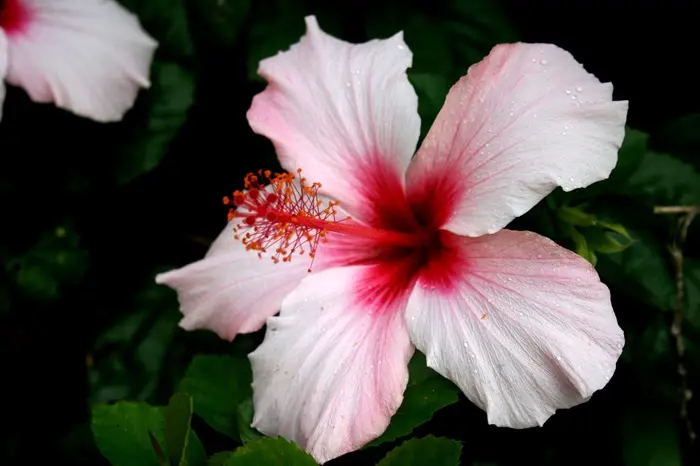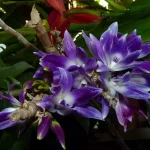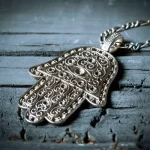The hibiscus flower, renowned for its vibrant beauty and captivating presence, holds significant meaning and symbolism across various cultures and contexts. This article delves into the multifaceted symbolism of the hibiscus flower, exploring its meanings in different colors, its significance in the Bible, its representation in tattoos, its associations with love and death, and its overall cultural impact.
Hibiscus Flower Symbolism
The hibiscus flower, with its delicate petals and striking colors, symbolizes many concepts and emotions. Universally, the hibiscus is associated with beauty, charm, and grace. It often represents the fleeting nature of beauty and the short-lived pleasures of life, as the hibiscus blooms for only a short period.
In many cultures, the hibiscus is seen as a symbol of feminine energy, representing delicate beauty, elegance, and the transient nature of youth. The flower is also linked to the notion of personal power and independence, embodying the strength and resilience found within individuals.
Hibiscus Flower Meaning
The hibiscus flower’s meaning varies depending on cultural and regional contexts. In general, the hibiscus is seen as a representation of delicate beauty and transient charm. However, its meaning can extend to encompass concepts like happiness, peace, and unity.
In Hawaiian culture, the hibiscus is particularly significant. It is often worn by women to denote their relationship status, with a hibiscus behind the left ear signifying that the woman is in a relationship, and behind the right ear indicating she is single. The flower is also a symbol of the Hawaiian Islands and is used in leis, traditional garlands that represent love and hospitality.
In Chinese culture, the hibiscus symbolizes fame, wealth, and personal glory. It is often given as a gift to express best wishes for prosperity and success.
See Also: What Does A Orchid Symbolize?
Hibiscus Flower Color Meaning
The meaning of the hibiscus flower can also vary depending on its color. Each color carries its unique symbolism, adding depth and nuance to the flower’s overall significance.
Red Hibiscus
The red hibiscus symbolizes passionate love and deep emotion. It represents intense romantic feelings and is often used to express love and affection. In some cultures, it is also associated with courage and strength.
Yellow Hibiscus
The yellow hibiscus is associated with happiness, joy, and sunshine. It symbolizes positivity and good fortune. This color is often used to convey warm feelings and friendly sentiments.
Pink Hibiscus
The pink hibiscus symbolizes gentle love, affection, and friendship. It represents softer emotions and is often used to express gratitude and admiration. The pink hibiscus is also associated with femininity and maternal love.
White Hibiscus
The white hibiscus represents purity, innocence, and new beginnings. It symbolizes spiritual enlightenment and is often used in ceremonies and rituals. White hibiscus flowers are also associated with peace and tranquility.
Purple Hibiscus
The purple hibiscus is a symbol of mystery, nobility, and high status. It represents regal beauty and is often associated with wisdom and spiritual growth.
Blue Hibiscus
Although rare, the blue hibiscus symbolizes serenity, calmness, and depth of emotion. It represents the tranquility of the ocean and the sky and is often used to convey deep and sincere feelings.
Hibiscus Flower Meaning in the Bible
In biblical contexts, the hibiscus flower is not explicitly mentioned. However, its symbolic meanings can be inferred from the general themes associated with flowers in the Bible. Flowers are often seen as representations of God’s creation, beauty, and the transient nature of life.
The hibiscus, with its delicate beauty and short lifespan, can be seen as a symbol of the fleeting nature of human life and the importance of living in accordance with God’s will. It can also represent the beauty and grace that come from a life dedicated to spiritual growth and devotion.
Hibiscus Flower Meaning in Tattoos
The hibiscus flower is a popular choice for tattoos, with its vibrant colors and intricate petals making it an attractive design. The symbolism of hibiscus tattoos can vary depending on the individual and the cultural context.
Hibiscus Tattoos for Women
For women, a hibiscus tattoo often symbolizes femininity, beauty, and grace. It can represent personal strength, independence, and the ability to overcome challenges. A hibiscus tattoo can also symbolize a connection to nature and a love for the natural world.
Hibiscus Tattoos for Men
For men, a hibiscus tattoo can symbolize respect for women, admiration for beauty, and a connection to nature. It can also represent a laid-back and relaxed attitude, embodying the spirit of tropical regions where the hibiscus flower is commonly found.
Hibiscus Flower Meaning in Love
The hibiscus flower has strong associations with love and romance. Its vibrant colors and delicate petals make it a popular choice for expressing romantic feelings and affection.
Romantic Love
In the context of romantic love, the hibiscus symbolizes passion, desire, and deep emotional connection. It is often used to convey intense feelings of love and devotion. The red hibiscus, in particular, is associated with passionate love and is commonly used in romantic gestures and decorations.
Platonic Love
The hibiscus can also symbolize platonic love and friendship. The pink and yellow hibiscus flowers are often used to express affection and appreciation for friends and loved ones. These colors represent gentle emotions and warm feelings, making them ideal for conveying non-romantic love.
Hibiscus Flower Meaning in Death
In some cultures, the hibiscus flower is associated with death and mourning. Its short-lived beauty serves as a reminder of the brevity of life and the inevitability of death.
Hibiscus in Funerals
The white hibiscus, in particular, is often used in funerals and memorial services. Its association with purity and new beginnings makes it a fitting symbol for honoring the deceased and expressing hope for their spiritual journey.
Symbol of Remembrance
The hibiscus can also symbolize remembrance and the enduring impact of loved ones who have passed away. It serves as a reminder of the beauty and joy they brought into the world, even if their time was brief.
Cultural Impact of the Hibiscus Flower
The hibiscus flower holds significant cultural importance in many regions around the world. Its vibrant beauty and rich symbolism have made it a beloved flower in various traditions and practices.
Hibiscus in Hawaiian Culture
In Hawaiian culture, the hibiscus is not only a symbol of beauty and love but also of hospitality and welcoming. It is commonly used in leis, which are given to visitors as a gesture of goodwill and aloha spirit. The hibiscus is also the state flower of Hawaii, representing the island’s natural beauty and cultural heritage.
Hibiscus in Chinese Culture
In Chinese culture, the hibiscus is associated with wealth, fame, and glory. It is often used in celebrations and ceremonies to wish for prosperity and success. The flower is also a popular motif in traditional Chinese art and literature, symbolizing personal achievement and honor.
Hibiscus in Indian Culture
In Indian culture, the hibiscus holds religious significance and is often used in rituals and offerings to deities. The red hibiscus, in particular, is associated with the goddess Kali and is used in worship to seek her blessings and protection. The flower is also used in Ayurvedic medicine for its various health benefits.
Hibiscus in Modern Symbolism
In contemporary contexts, the hibiscus continues to be a powerful symbol of beauty, love, and positivity. Its vibrant colors and intricate petals make it a popular choice for art, fashion, and design. The hibiscus is often used in branding and marketing to evoke feelings of joy, warmth, and tropical allure.
Hibiscus in Fashion and Design
The hibiscus flower is a common motif in fashion and design, symbolizing exotic beauty and vibrant energy. It is used in clothing, accessories, and home decor to add a touch of tropical elegance and color. The flower’s distinctive shape and bold hues make it a striking element in various design applications.
Hibiscus in Art and Literature
In art and literature, the hibiscus is often used to convey themes of beauty, love, and the transient nature of life. Its rich symbolism and visual appeal make it a popular subject for artists and writers seeking to capture the essence of fleeting moments and intense emotions.
Conclusion
The hibiscus flower, with its stunning beauty and rich symbolism, holds a special place in the hearts of many cultures and individuals. Whether representing love, beauty, joy, or the transient nature of life, the hibiscus continues to inspire and captivate people around the world. Its vibrant colors and delicate petals serve as a reminder of the fleeting nature of beauty and the importance of cherishing every moment. Through its various meanings and associations, the hibiscus flower remains a powerful symbol of the human experience and the natural world’s exquisite charm.
Related topics:













